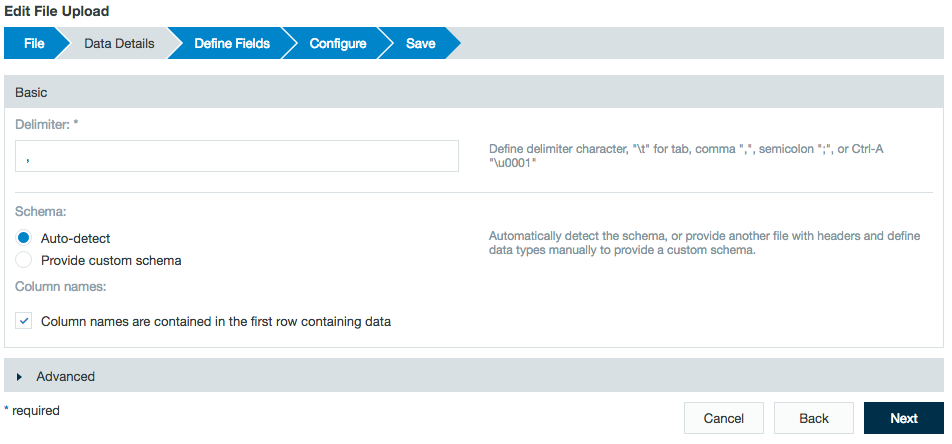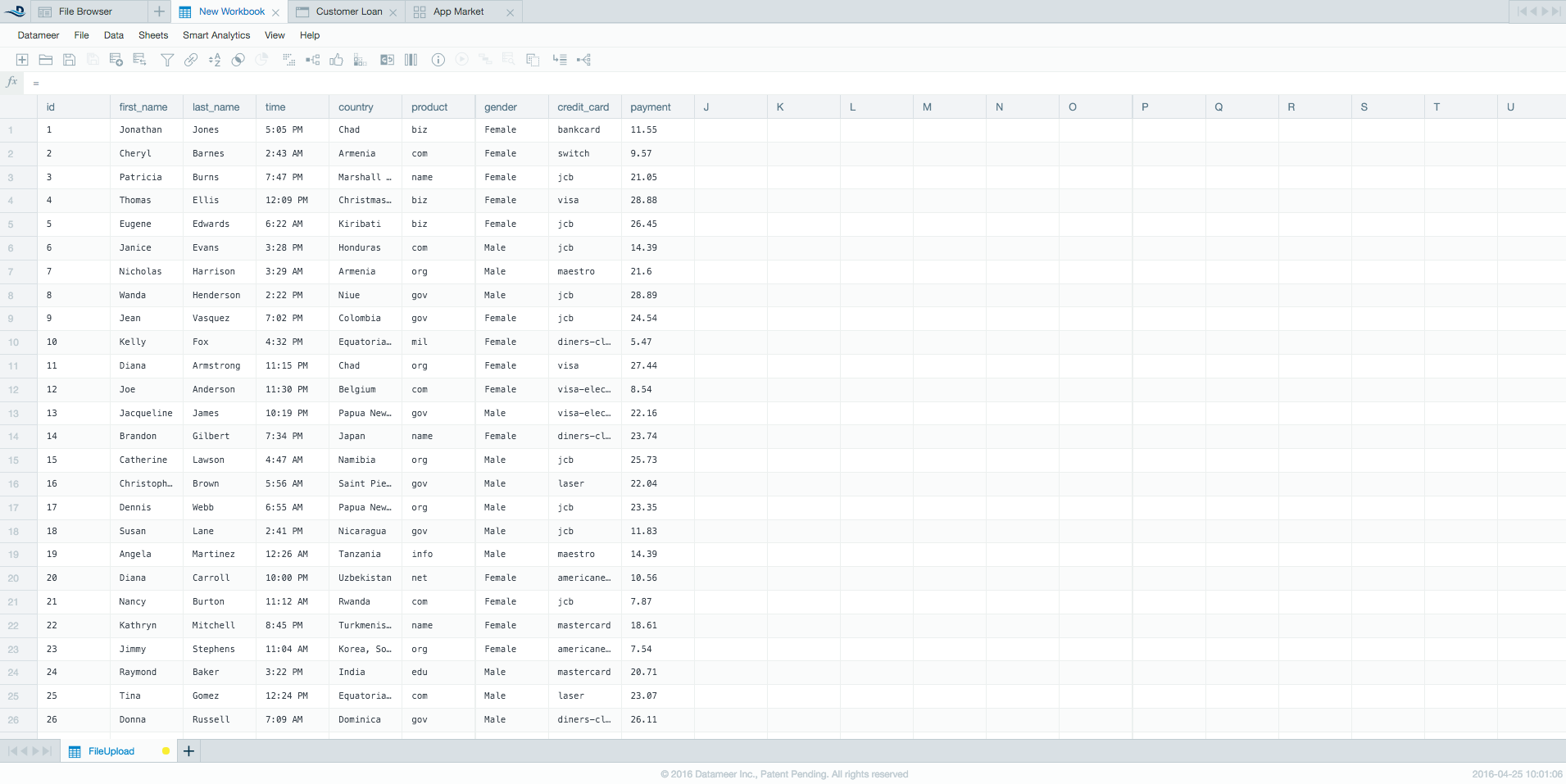Thanks for installing Datameer!
Here are a few pointers to help you get started. First, let's complete the most basic tutorial, called Hello World.
Say "Hello" to Datameer
Follow this tutorial to complete the simplest end-to-end analytics example. You upload some data, build an analytics workbook, and visualize your results in an infographic.
This tutorial describes how to open this file after it's downloaded from the App market. To download the app, click the App Market tab from inside Datameer, locate the app, and click Install.
1. Open the first tutorial folder Tutorial Hello World in the File Browser tab or download the app from the App Market.
2. In the Resource folder, double-click the My Upload file and click Configure. (As of v6.3, click Open.)
3. This screen is where you can choose the file you want to upload by clicking Choose File and format by selecting the drop-down menu. For this example, click Next to continue.
4. Under Data Details leave the Column names are contained in the first row containing data check box selected. Notice you can choose your delimiter and advanced options (e.g. quote character). Click Next to continue.
5. You now see a preview of the data where you can make any changes as needed to the file type, column name, or columns to include. Click Next.
6. The configuration sections gives you the option of defining a sample size of the data to show. Under Advanced, users can define optional custom properties. Click Next.
7. Save the file upload with the same name by clicking Save or create a copy by clicking Save Copy As...
8. In the File Browser tab, click the + (plus) button and select Workbook. From the Add Data window, select MyUpload from the /Tutorial Hello World/Resources/ folder and click Add Data.
9. Once you have opened the data in your workbook you can now analyze the data. Click Filter on the tool bar and choose City as the filter column and Equals as the expression, and enter Chicago as your value. Click Create Filter.
10. To save the workbook, click Save Workbook and choose a name for the file such as "MyWorkbook" and click Save. You have options on how and when to run the workbook. Select the Start calculation process immediately after save check box and then click Save to start the calculation.
11. After the workbook has been calculated you can visualize the analysis of your data using an infographic. Click the + (plus) button in the File Browser again and choose Infographic to create your first data visualization.
12. From the Add Widget inspector, drag-and-drop the bar chart onto the canvas. Click Data on the widget to add your data from your workbook. Navigate to MyWorkbook, under in the Browser on the right to latest results, and drag the Name column to the Label field, and the Age column to the Data field. The widget updates automatically. That’s it! If you want to save this infographic, click the Save icon, and you’re all set. Have fun exploring!
Once you've completed this example, you might want to explore the workspace (below), or continue on to the next example: Basic Tutorial.
Exploring the Workspace
When you first log in, you see that you are under the File Browser tab. In the File Browser, you can quickly move among data sets, workbooks where you create analytics, and infographics where you create reports and visualize your data. You can also open multiple tabs to navigate between the different worksheets with ease.
File Browser Navigation Bar
From the navigation bar on the left side of the screen you can easily move through the folders where files are saved in Datameer and see information relating to your files. From here you can set up connections, import jobs and export jobs, work with workbooks, set up data links, and create infographics.
To get started using Datameer, right-click on the page, choose Create new and make a selection. You can also use the + (plus) button to make a quick selection and open a new tab.
Import data
Create workbooks
Create and edit workbooks.
For workbook shortcuts, see Keyboard Shortcuts.
Visualizing data
Datameer's infographic tools help you create informative and exciting visual displays of your data.
Admin Tab
The Admin tab (which is only available if your account has administrator permissions) provides access for configuring job settings, underlying data settings, permissions, and user settings. The Datameer administrator sets the permissions for your account specifying the read and write access for the available data sources, workbooks, and infographics.
What Next?
If you've completed the Hello World example, we recommend the basic tutorial next, followed by the market research examples.

















